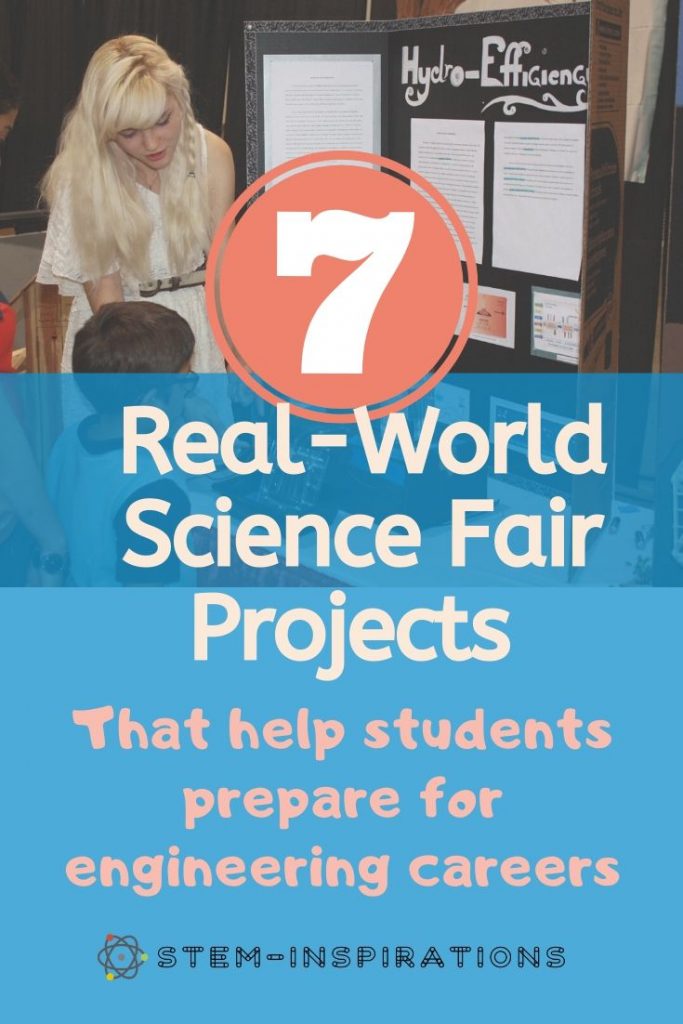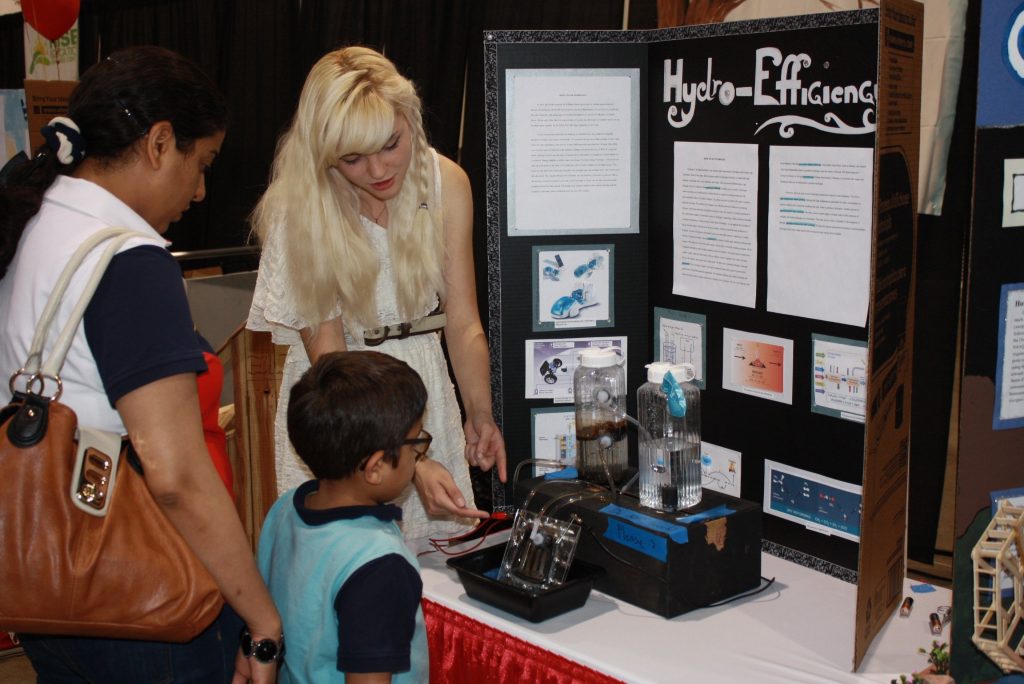
Science fair projects that solve problems are a great way for students to test their interest and aptitude for a career in STEM (science-technology-engineering-math). But they shouldn’t choose just any old topic. To make the most of the opportunity, try to focus on projects with real-world applications. This will give them hands-on experience directly related to a good-paying job field, like engineering.
With planning and hard work, the right science fair project might bump up a student’s chances for a scholarship or a trip to one of the science competitions sponsored by the Society for Science.
Do your students need help sketching the experimental set-up for a science fair presentation? Check out these resources:
- My Engineering Draw & Write Journal for Kids: 48 Fun Drawing and Writing Prompts to Learn about the Engineering Design Process.
Don’t get me wrong — creating foaming volcanoes or diagramming the human circulatory system are fun and classic ideas for a science fair project. But unless your student plans to go to med school or major in geology, these typical projects won’t do much to advance his or her future career. Far more practical engineering jobs will be available in the 21st century.
In this post you’ll find seven problem-solving science fair projects gleaned from the Education.com website. They provide simple, but realistic, introductions to real-world careers in electronics, robotics & automation, and construction engineering.
For more help with choosing a science fair topic, setting up your experiment, collecting and analyzing the data, and presenting your results, visit NASA’s video page on How to do a Science Fair Project.
Solving problems in Smart Technology
Consider the hottest topic in industry today – Smart Manufacturing, or Industry 4.0, sometimes called the Industrial Internet of Things (IIOT). Industry 4.0 is just one facet of the global push towards Smart Cities, Smart Homes, and Smart Agriculture.
All these concepts center on wireless connectivity between machines using cellular networks. So, for Smart Homes, this means your utilities, fridge, lights, security, HVAC, and other systems would be connected through an app on your smartphone. From there you can track and control these systems to keep your home safe and comfortable, while reducing water and energy use.
[Click here to join the STEM-Inspirations mailing list]
For Industry 4.0, companies are connecting the machines used in their manufacturing and power generation plants at different locations around the world. On top of that, they are creating “digital twins” of each machine, which are 3D animated computer models of the machines.
The idea is to collect real-time data from each machine and then use that data, along with artificial intelligence (AI), machine vision, and even virtual reality simulations, to:
- Design new products
- Predict when a machine will need maintenance BEFORE something goes wrong
- Optimize the output of the machines and harmonize them to work together
Solving problems in Robotics
Another major topic in industry is robotics and automation. Automation means that machines are programmed to perform tasks without human help. Some robots are standalone, “service” robots, like the Roomba. Others, like robotic arms in factories and warehouses, pick and place items to be processed.
The more human-friendly “collaborative” robots can improve human capacity and are safe to work around. Put together, these technologies allow some manufacturing plants to run “lights out,” without any human input for days.

Robots are boosting agriculture, both in planting and harvesting fields and in packaging food. With Smart Agriculture technology, farmers collect data in their fields with mobile apps applying artificial intelligence (AI) software to reduce fertilizer needs and optimize water use.
Help students sketch their experimental set-up for science fair presentations with these resources:
- My Engineering Draw & Write Journal for Kids: 48 Fun Drawing and Writing Prompts to Learn about the Engineering Design Process.
Solving Engineering Problems
Most science fair projects on the internet seem to focus on the basic sciences, like biology and chemistry. But in light of the skills gap we are now experiencing between the available job force and manufacturing industry requirements, I believe engineering-focused science fair projects that solve problems in Industry 4.0, robotics, automation, and construction may be better choices for building up tomorrow’s workforce.
Here are 7 science fair project ideas that focus on solving problems:
1. Cell phone dead zones science fair project
https://www.education.com/science-fair/article/cell-phone-dead-zones/
Students learn how wireless networks work, find dead zones where wireless signals are lost, and determine ways to reduce these zones – important preparation for students who hope to work on Smart Homes, Smart Factories, Smart Cities, or Smart Agriculture.
2. App development science fair project
https://www.education.com/science-fair/article/iphone-application-design/
An app on a phone or tablet can be an interactive game, a navigational device, a business software package, or just about anything else you can imagine. This project allows you to get a head start in the growing app design field by designing your own app for popular smartphones.
3. Smoke detector science fair project
Sensors of all kinds solve problems for smart technologies and robotics engineering. Sensors can detect motion, gases, light, heat, and other changes in the environment to allow robots to avoid collisions or Smart Homes to detect a fire, for example. This project compares the effectiveness of two types of sensors in a smoke detector.
4. Faraday’s experiment science fair project
https://www.education.com/science-fair/article/faraday-experiment-current-generated-magnet/
Electric currents create their own magnetic fields, and the movement of magnets induces, or creates, current in a wire. Motors and generators use magnetic movement to create current and send electricity to do useful work to power machines. In this lab, you will recreate Michael Faraday’s famous experiment by building a solenoid (a coil of wire) and experiment with moving magnets to produce current.
5 & 6. EMFs science fair projects
https://www.education.com/science-fair/article/smart-card-electromagnetic-fields/
https://www.education.com/science-fair/article/EMF-affect-us/
Radio Frequency Identification (RFID) is an electronic technology used in credit cards, ID Cards, and theft prevention systems, as well as in manufacturing, warehousing and shipping products. The first project measures the electromagnetic fields (EMFs) given off by various RFID transmitters, which may have harmful effects on people. The second project looks directly at how EMFs can affect us physically.
7. Rust prevention science fair project
https://www.education.com/science-fair/article/bust-that-rust/
Metals rust, and that can be a big problem when it comes to bridges, buildings, cars, and any object exposed to air and water. This project examines the process of oxidation (not just rust) that ultimately breaks down every physical object and looks at ways to prevent that from happening.
For more problem-solving science fair project ideas, follow the STEM-Inspirations Science Fair Projects board on Pinterest.
Copyright © 2017-2021 by Holly B. Martin
Click here to join the STEM-Inspirations mailing list.
